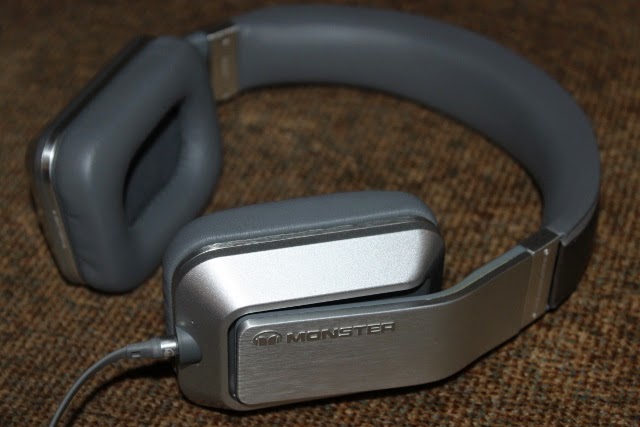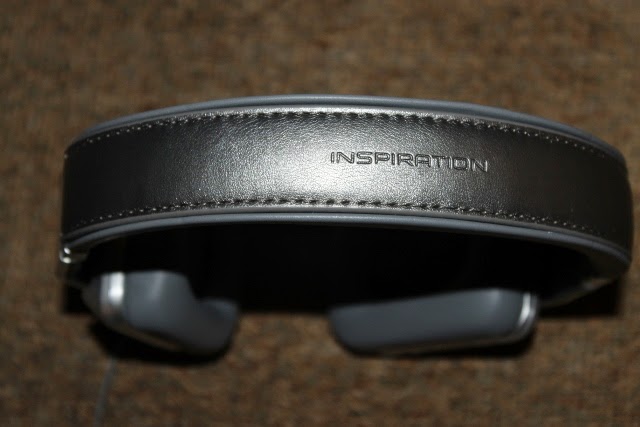As a father of young children, I’m quickly losing
opportunities to blast my stereo system which makes headphones the ideal choice
for my home listening. I recently decided to treat myself with two new pairs.
It can be a bit confusing searching online for headphones. I’m
no audiophile, but I do like quality so I rarely opt for the cheapest option. I
want something durable, comfortable, and that sound good to me. Many message forums and reviews tend to be biased and/or misleading. Some people enjoy bashing any products that they don’t have and
defending their own purchases, not wanting to admit there could be anything
better out there. All reviews are not written by these types of people, but
many are, which at times can be discouraging. Once I stopped looking for what
others call “the best”, and instead concentrated on “the best for me” pair, my
search became a bit easier, and a lot more fun.
You can spend a lot of money on headphones, some costing
thousands of dollars. A $2000 pair of headphones is sure to have features and
better sound quality than a $200 pair, but you don’t need to spend this much to
get something decent. I recently talked to an audiophile who has tens of
thousands invested in his system and over 30 years’ experience in the hobby,
and he believes that you can get 95% of good sound quality on a budget, it’s
the other 5% that you need to pay through the roof for (before all you
audiophiles start arguing these percentages, it’s just opinion). There is
nothing wrong with the expensive gear and it can be a lot of fun chasing this
last 5%, unfortunately my bank account doesn’t currently allow it.
Pair #1- Grado SR80i (price: $149 CAD)
I had the opportunity to try out Grado models SR60i, SR80i,
SR125i and SR225i (priced between $100-$275), all while I was in a quiet show
room. All four pairs are open back headphones and they sounded absolutely
amazing, each increase in price giving a relative increase in quality. Don’t
think because the SR60i’s are the cheapest that they are bad, the quality level
started very high. Every little ting of the drum cymbals was crystal clear, and
the bass drum sounded nice and deep. The good comparison I was given for these
headphones is that every dollar you spend, is equal to about $15 spent on high
end speakers. So $150 headphones average the same sound quality as a $2250 set
of speakers (calm down audiophiles…. damn you are testy….again purely
opinion/estimate).
I settled on the SR80i’s. The jump in quality from the
SR60i’s was substantial, and the jump to the SR125i and SR225i’s seemed to be
at a smaller scale. I felt like I was getting the best sound quality per
dollar. When I got home and tried them out I quickly realized the difference
between open back and closed back headphones. The quiet showroom was very
deceiving.
Grado has a great explanation of open back headphones on
their website (www.gradolabs.com):
“Closed-back
headphones make music sound like it is coming from inside your head. Open-back
headphones allow sound to pass through the back of the ear piece, creating an
open, accurate and natural sound. This soundstage seems wider and has more
presence. That extra air flow is able reduce the effect of sound "bouncing
around" inside closed back headphones - creating a more natural and
realistic listening experience, while also increasing the accuracy of the
audio.”
While it gives this natural clear sound, it also lets all
outside noise in. So to wear these in the same room that my kids are watching
television doesn’t work so well. In a quiet environment, however, these were
amazing. There was no way that I would return them, instead I bought a second
pair of headphones.
Pair #2 – Monster Inspiration ($249 CAD, but got on sale for
$129)
Monster and their old partner Beats are hugely popular headphones
and also amongst the most bashed brands by audiophiles and geeky forum people
who like to complain.
These are closed back over ear headphones giving it the more
“inside your head” sound as stated above. I like this isolation since I can
listen to music at a much lower volume and still make out the details. They
also have active noise cancelling technology meaning that they have little
microphones in the earpieces that when they pick up the frequencies of outside
noise they create another frequency matching it but inverted, cancelling it out.
The Monster noise cancelling is not anywhere as good as the popular Bose noise
cancelling, but it still helps. I don’t have the need for the active noise
cancelling so I leave it off, but it’s nice to have the option.
These headphones do tend to emphasize the bass a bit, which
many people dislike since it is masking the original sound. Why are headphones
that customize sound a bad thing? Adding bass or treble is modifying how the
instruments sound, but so is adding reverb, delay, distortion, bass, treble, etc. to the instruments during the recording
process. I don’t see it as a mistake, it’s a conscious choice. The people
recording this music wanted to manipulate the sound so that would match their
vision. Why can’t we do the same thing at home? Let’s face it; some music could
sure use a little polishing to make it sound better. I just read this great
article on pitchfork that covers this nicely (http://pitchfork.com/features/resonant-frequency/8757-permission-to-avalanche-four-fragments-on-bass/).
I especially like this quote from the article:
“Beats by Dr. Dre are
popular because they don't reproduce music as much as they transform it. They
are the right headphones for the current era, because their design
"customizes" the sound for the listener who wants bass. Music is
never finished; we can chop and screw, add bass, slow it down 100x, mash it up
with something else. And people will buy headphones that finish the music in
the way they like.”
It doesn’t work for all of the music I listen to, but I sure
do like the Monster Inspiration headphones for a lot of my music. While these
headphones are a bit pricey, the build quality alone makes me feel I am getting
my money’s worth. I’m no expert on all of the electronic guts in the headphones
and perhaps they do cheap out on some parts, but it worked for me.
In conclusion:
While purchasing two pair of headphones is not ideal for
most, I’m happy with how this turned out. My Grado’s are perfect when I’m
listening to classic music, in particular vinyl, the Monster’s match up with my
iPhone nicely, and are great at blocking outside noise. Sure there is probably
a pair out there that would match all of my needs, but the collector in me is
sure enjoying the quest to find them. I’m already eyeing my next pair.

.jpg)
.jpg)
.jpg)
.jpg)
.jpg)
.jpg)
No comments:
Post a Comment
Note: Only a member of this blog may post a comment.